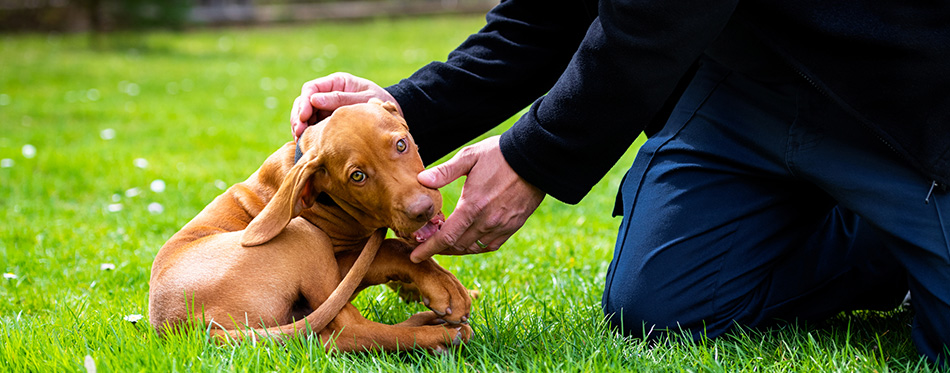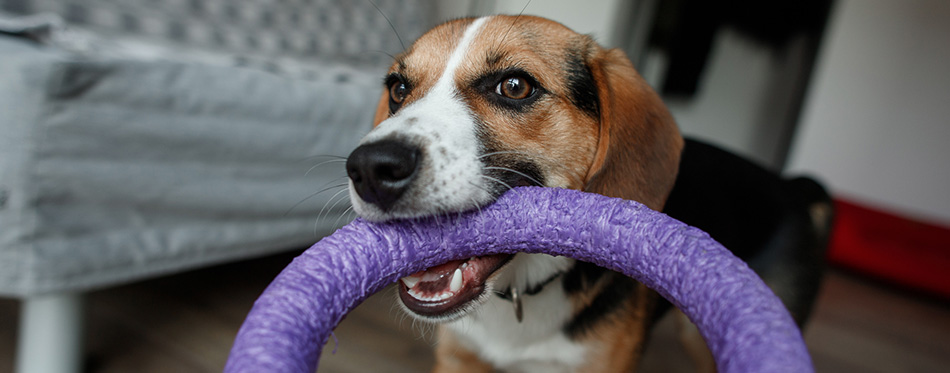Teething is one of the unavoidable processes of growing up, and dogs experience this in their own unique way at some point in their lives. At that point, the puppies need all the care and attention they can get, to go through teething as painlessly as possible. This stage of life also comes with some destructive behaviors that need to be checked and curbed. In this article, the teething process will be discussed, as well as ten tips to help with puppy teething. By the end, you will be in a better position to help your puppy live a happier life even while going through something this uncomfortable.

The Puppy Teething Process
The primary purpose of teething is to get rid of old teeth and make room for new permanent teeth. Puppies, like some other animals, are born without teeth and develop them over the course of their lives. The first set of teeth, also known as milk teeth, comes in at about three to four weeks old. During this stage, the front teeth begin to grow, with the incisors making the first appearance, six on both the top and bottom. After that, the premolars and molars set in, three on each side of the mouth, both top and bottom. The canines, which look like needles, also start to appear, with one on each side of the mouth, top and bottom. At five to eight weeks, the molars, which are the last of baby teeth, begin to develop. After eight weeks, the permanent teeth start developing, pushing the milk teeth out, while absorbing the roots.
The milk teeth or deciduous teeth usually fall off to make way for the permanent set, but sometimes there is a delay. This delay can cause the dog to have a double set of teeth, which can be uncomfortable. A veterinarian can extract the old teeth to give the new set adequate room to grow. It is at this stage that you would start considering teeth brushing, and by six months, all the adult teeth should have fully developed. Your dog should have 42 permanent teeth by seven months old, and anything contrary warrants attention from the vet.
Symptoms of Teething
You might be wondering how long do puppies teeth? Based on the timelines given above, it should take about seven months to complete the process, and it comes with some signs. One of the most obvious signs is red, inflamed, and bleeding gums due to the replacement of teeth. They also experience drooling, which may be accompanied by bad breath. Your dog might also become an excessive chewer and will try to get everything in their mouth, including your fingers. Even though it’s common and safe for your dog to swallow the teeth that are falling out, you’re also likely to find them around the house. Your puppy might have a decrease in their appetite because of the discomfort they feel when they chew, and their mood will be irritable as well. Teething in itself isn’t extremely painful that it disrupts the dog’s quality of life, but it can be very uncomfortable, and they’ll need some support. Each tooth has a purpose, and so you should keep an eye on the dog when they are teething to spot any abnormalities early.
Take a look at our review of Dog Dental Spray for more options.
How to Help a Teething Puppy
- Puppy training or socialization: This process is to address the behavioral issues that come with the teething process, like the increased chewing. You can enroll your puppy into a class where they can learn how to manage the discomfort in the presence of others. You will also learn some beneficial tips on living with the animal and how to handle their behaviors. The best time to enroll them is when they are young, and the lessons are likely to stick with them. A well-taught group class empowers you to be in control of the situation while your puppy learns to be well-adjusted.
- Quality chew toys: In as much as you are trying to stop excessive biting and chewing, an amount of biting is needed This is a healthy way to keep the gum exercised while the dogs go through this uncomfortable process. The type of objects you make available for chewing is a matter of importance here. You do not want your puppy to be chewing on hard things, which may take the pain from bearable to unbearable. Get them soft chew toys that require minimum effort and produce less pain for them. If you want something more irresistible, you can use a washcloth soaked in chicken broth and then frozen as an object for them to chew on. This strategy gives you puppy something else to chew apart from your valuable items and furniture. Most importantly, the toys should be durable so that they do not fall apart and become a hazard for the dog.
- Mental and physical stimulation: Another way to get your puppy’s mind off the discomfort is to get their bodies and their minds busy with some activity. Dog toys are great, but they will not work all the time, and the dog’s body must be up and doing. They are games you can play with the dog to help with this, and you and your dog will have a lot of fun. While it might not completely eliminate the biting problem, it will decrease the frequency and intensity at which it occurs.
- Soft-mouth training: This is where you teach the puppy to learn to be soft with their food. The technique involves using a treat that they love and placing it in your palm. Let the dog know that you have the food there and then close your palm off to them. Release the treat only when they lick your fingers gently without puncturing the skin. If they apply even the slightest pressure or use their teeth, walk away from them with the treat. After about ten minutes, try again until they have learned to be gentle when asking for food.
- Bitter apple spray: This method is to deter the puppy from biting into objects by making them unattractive. The taste of the apple spray is not one that dogs like, and so you can apply some over things like furniture. Anytime your dog goes close, they will remember the bad taste and refrain from biting on it.
- Crate training: Most of the time, sending the dog into a crate is a way to punish them, but when a dog is teething, it should be the opposite. Every space the dog occupies must be a safe space for them and should foster good memories so that they aren’t stressed into more chewing behaviors. For more options, check out our detailed review of the best dog crates.
- Handfeeding: This might sound gross at first, but teething puppy needs a caring environment to go through that stage. Allowing your pup to lick food off your hand shows them how much you care for them and how much you understand what they’re going through. It helps you to bond more with the animal and shows them that you can be trusted as a helper.
- Don’t separate them just yet: There are a lot of things puppies learn while with their littermates that help with biting behavior. For example, biting a nipple too hard means they won’t be getting any snacks. Biting a littermate also means not getting anyone to play with. These consequences teach the pup that biting is not a good idea, and so it should be stopped.
- Ignore: If you want your dog to stop their biting behavior, then you must not encourage it. Movement, while the dog is nipping on you, can be an invitation to continue and so you should stand still whenever the dog gets close to bite. Teach everyone in the household to also behave in the same manner, and after a while, the dog will stop it.
- Leave it: While chewing on a toy can be suitable for their gums at some point, they will have to take a break from it. Teach the puppy when it is time to let go of their toy by using something else as a distraction. For example, present a treat while saying ‘leave it’ and automatically they will reach for the treat. Continue this until they have learned what the phrase means even without a treat.
Head over to our review of Chew & Teething Toys for Puppies for more choices.
Home Remedies for Teething Puppies
Aside from the behavioral aspect, there are simple ways to bring teething relief for puppies at home. Offering cold things for the dog to chew on bring relief to the puppy even if it’s for a short while. They can have frozen fruits and vegetables like bananas and carrots soothe your dog’s gums while they chew, and during that time, they will not feel much discomfort.
Find out more about Dog Chews here.

To Summarize
When thinking about how to deal with puppy teething, no pet parent wants their pup to experience discomfort since it can affect the quality of the time you spend together. The teething puppies tips in this article offer a great way to help with this stage of a dog’s life without spending much resources. The most important advice, however, is to seek the help of a vet who is more trained to offer your pup more assistance. In case things are getting out of hand, the professionals will always be the best people to help.

